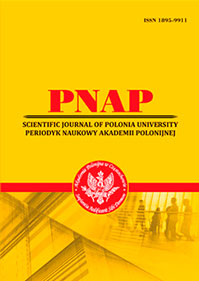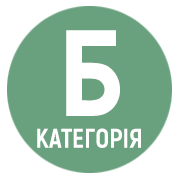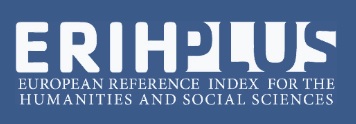КОГНІТИВНЕ НАВАНТАЖЕННЯ ТА ТРИВАЛІСТЬ ПРОЦЕСУ ПЕРЕКЛАДУ СИНЕСТЕЗІЙНИХ МЕТАФОР ЗА ДАНИМИ ЕКСПЕРИМЕНТАЛЬНОЇ МЕТОДИКИ «РЕЄСТРАЦІЯ НАТИСКУ КЛАВІАТУРИ»
Анотація
Стаття присвячена експериментальному дослідженню перекладу синестезійних метафор з англійської на українську мову із застосуванням методики «Реєстрація натиску клавіатури» (РНК). Метою роботи є виявлення впливу типу когнітивної моделі, яка лежить в основі синестезійної метафори, на складність її перекладу, а також встановлення перекладацьких стратегій та когнітивних операцій, що застосовуються у процесі перекладу таких метафор. У дослідженні було використано корпус фрагментів художніх текстів, що містять синестезійні метафори, які класифікуються за типом когнітивної моделі: культурно-збіжні, культурно-незбіжні та оригінальні. Учасниками експерименту стали перекладачі з різним рівнем досвіду, розподілені на три групи.Аналіз лог-файлів дозволив простежити часові витрати, кількість і тривалість пауз, частоту повернень до попередніх версій перекладу, кількість редагувань і вибрані когнітивні операції (збереження, заміна, компенсація, усунення). Результати показали, що найбільших когнітивних зусиль потребує переклад оригінальних метафор, що підтверджується як кількісними показниками часу та редагувань, так і результатами опитування учасників. Культурно-збіжні моделі виявилися найменш проблемними, що свідчить про важливість концептуальної сумісності у разі передачі метафоричного значення. Найчастіше застосовуваною когнітивною операцією стала операція збереження, що вказує на прагнення перекладачів зберегти метафоричність образу.Аналіз також виявив різницю в кількості запропонованих варіантів перекладу залежно від групи, що свідчить про індивідуальні стилі обробки метафоричних конструкцій. Стаття робить внесок у розуміння когнітивної складності перекладу нестандартних образних структур і може слугувати основою для подальших міждисциплінарних досліджень у галузі перекладознавства, психолінгвістики та когнітивної лінгвістики.
Посилання
2. Alves F., Pagano A., Neumann S., Steiner E., Hansen-Schirra S. Translation units and grammatical shifts. American Translators Association Scholarly Monograph Series. 2010. P. 109–142. DOI: https://doi.org/10.1075/ata.xv.07alv.
3. Angelone E. Uncertainty, uncertainty management and metacognitive problem solving in the translation task. Translation and Cognition. 2010. P. 17–40. John Benjamins Publishing.
4. Corpus of Contemporary American English (COCA). (n.d.). COCA. URL: https://www.english-corpora.org/coca/ (дата звернення: 06.02.2025).
5. Doerr A. All the Light We Cannot See: A Novel. Reprint. New York : Scribner, 2014.
6. Day S. (1996). Synesthesia and Synesthetic Metaphors. PSYCHE, 2(32), 1–19. URL: http://www.daysyn.com/Day1996.pdf.
7. Harris J. Chocolat. Anchor Canada, 2010.
8. Heilmann A., Neumann S. Dynamic pause assessment of keystroke logged data for the detection of complexity in translation and monolingual text production. International Conference on Computational Linguistics. 2016. P. 98–103. URL: https://aclanthology.org/W16-4111/.
9. Jakobsen A.L. Logging target text production with Translog / G. Hansen (Ed.). Probing the Process in Translation: Methods and Results. Samfundslitteratur, 1999.
10. Kovalenko L., Martynyuk A. English container metaphors of emotions in Ukrainian translations. Advanced Education. 2018. № 5(10). P. 190–197. DOI: https://doi.org/10.20535/2410-8286.142723.
11. Kövecses Z. Metaphor in Culture: Universality and Variation. Cambridge : Cambridge University Press, 2010. (Original work published 2002).
12. Kovecses Z. Metaphor: A Practical Introduction. 2nd ed. Oxford : Oxford University Press, USA, n.d.
13. Lakoff G., Johnson M. Metaphors We Live By. 1st ed. Chicago : University of Chicago Press, 1980.
14. Lakoff G., Turner M. More than Cool Reason: A Field Guide to Poetic Metaphor. 1st ed. Chicago : The University of Chicago Press, 1989.
15. Läubli S., Germann U. Statistical modelling and automatic tagging of human translation processes. New Frontiers in Translation Studies. 2015. P. 155–181. DOI: https://doi.org/10.1007/978-3-319-20358-4_8.
16. Qassem M., Thowaini B.M.A. Cognitive processes and translation quality: Evidence from key-stroke-logging software. Journal of Psycholinguistic Research. 2023. Vol. 52, № 5. P. 1589–1604. DOI: https://doi.org/10.1007/s10936-023-09964-1.
17. Qian X. Novice, paraprofessional, and professional translators’ strategy use in Chinese-English translation processes: retrospective reflections, concurrent screen-capturing, and key-stroke logging. 2017. URL: http://dspace.library.uvic.ca/handle/1828/8525.
18. Schäffner C. Metaphor and translation: some implications of a cognitive approach. Journal of Pragmatics. 2004. Vol. 36, № 7. P. 1253–1269. DOI: https://doi.org/10.1016/j.pragma.2003.10.012.
19. Serbina T., Neumann S., Niemietz P. Development of a keystroke logged translation corpus. New Directions in Corpus-Based Translation Studies / Eds. Federico Zanettin, C. Fantinuoli. Language Science Press, 2015. DOI: https://doi.org/10.17169/langsci.b76.64.
20. Strik Lievers, F. Synaesthesia: A corpus-based study of cross-modal directionality. Functions of Language, 22(1), 69–95. https://doi.org/10.1075/fol.22.1.04str, 2015.
21. Strik-Lievers, F. Synaesthetic Metaphors in translation. In V. Piunno & R. Simone (Eds.), Studi e saggi linguistici (pp. 43–68). ETS. https://doi.org/10.4454/ssl.v54i1.149, 2017.
22. Swar O., Mohsen M. Students’ cognitive processes in L1 and L2 translation: Evidence from a keystroke logging program. Interactive Learning Environments. 2022. Vol. 31, № 10. P. 6696–6711. DOI: https://doi.org/10.1080/10494820.2022.2043386.
23. Tartt D. The Secret History. New York : Alfred A Knopf, 1992.
24. Tartt D. The Goldfinch: A Novel. Pulitzer Prize for Fiction. Boston : Back Bay Books, 2015.
25. Williams J.M. Synaesthetic Adjectives: A Possible Law of Semantic Change. Language, 1976. 52(2), 461. https://doi.org/10.2307/412571
26. Zhulavska O.O. Reconstruction of synesthetic metaphors in English-Ukrainian translations as the main translational decision within the foreignizing strategy. Nova Filolohiia. 2020. № 1(80). P. 185–199. DOI: https://doi.org/10.26661/2414-1135-2020-80-1-29.
27. Zhulavska O., Martynyuk A. Linguacultural isomorphism / anisomorphism and synesthetic metaphor translation procedures. The International Journal of Translation and Interpreting Research. 2023. Vol. 15, № 1. P. 275–287. DOI: https://doi.org/10.12807/ti.115201.2023.a14.
28. Zhulavska O., Kulish V., Chernyk M. Adding synesthetic metaphors in English-Ukrainian translations of fiction. East European Journal of Psycholinguistics. 2024. Vol. 11, № 1. DOI: https://doi.org/10.29038/eejpl.2024.11.1.zhu.
29. Ребрій О.В. Сучасні концепції творчості у перекладі. Харків : ХНУ імені В.Н. Каразіна, 2012. URL: https://foreign-languages.karazin.ua/resources/a28dc3bfe2522ad80245ccdf2ad02789. pdf.

Ця робота ліцензується відповідно до Creative Commons Attribution 4.0 International License.
 ISSN
ISSN 


.png)




